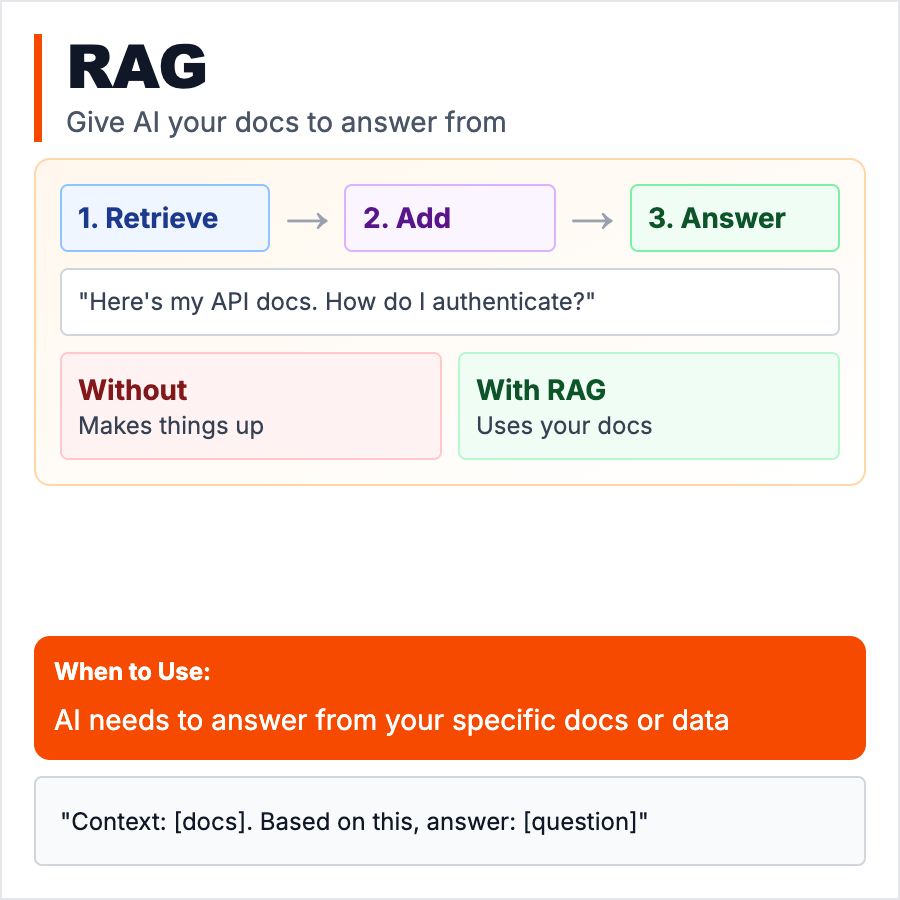
What is RAG (Retrieval-Augmented Generation)?
RAG (Retrieval-Augmented Generation) combines AI with search to answer questions using your own data. User asks question → search your docs for relevant info → feed to AI with question → AI answers based on YOUR data, not just training. Reduces hallucinations, adds up-to-date knowledge, grounds AI in facts. Like giving AI a textbook to reference instead of relying on memory. Essential for customer support, docs Q&A, internal knowledge bases.
When Should You Use This?
Use RAG when: AI needs domain knowledge not in training data, you want factual answers from your docs/data, reducing hallucinations is critical, or data changes frequently (docs, policies). Common for: customer support bots, internal Q&A, doc search, research assistants. Don't use when: data is public knowledge (AI already knows), real-time data isn't needed, or simple prompting works.
Common Mistakes to Avoid
- •Bad search—if retrieval doesn't find relevant docs, AI hallucinates anyway
- •Too many docs—feeding 50 docs overwhelms context, use top 3-5 most relevant
- •No citation—AI should cite which doc it used, helps verify accuracy
- •Ignoring chunks—split long docs into chunks, embed/search chunks not whole docs
- •Not updating index—your docs change, re-embed/index regularly
Real-World Examples
- •Customer support—User asks question → RAG searches KB → AI answers with KB context
- •Docs Q&A—"How do I deploy?" → RAG finds deployment docs → AI explains based on your docs
- •Research—RAG searches papers → AI summarizes relevant findings with citations
- •Internal tools—Employee asks HR question → RAG searches policies → accurate answer
Category
Ai Vocabulary